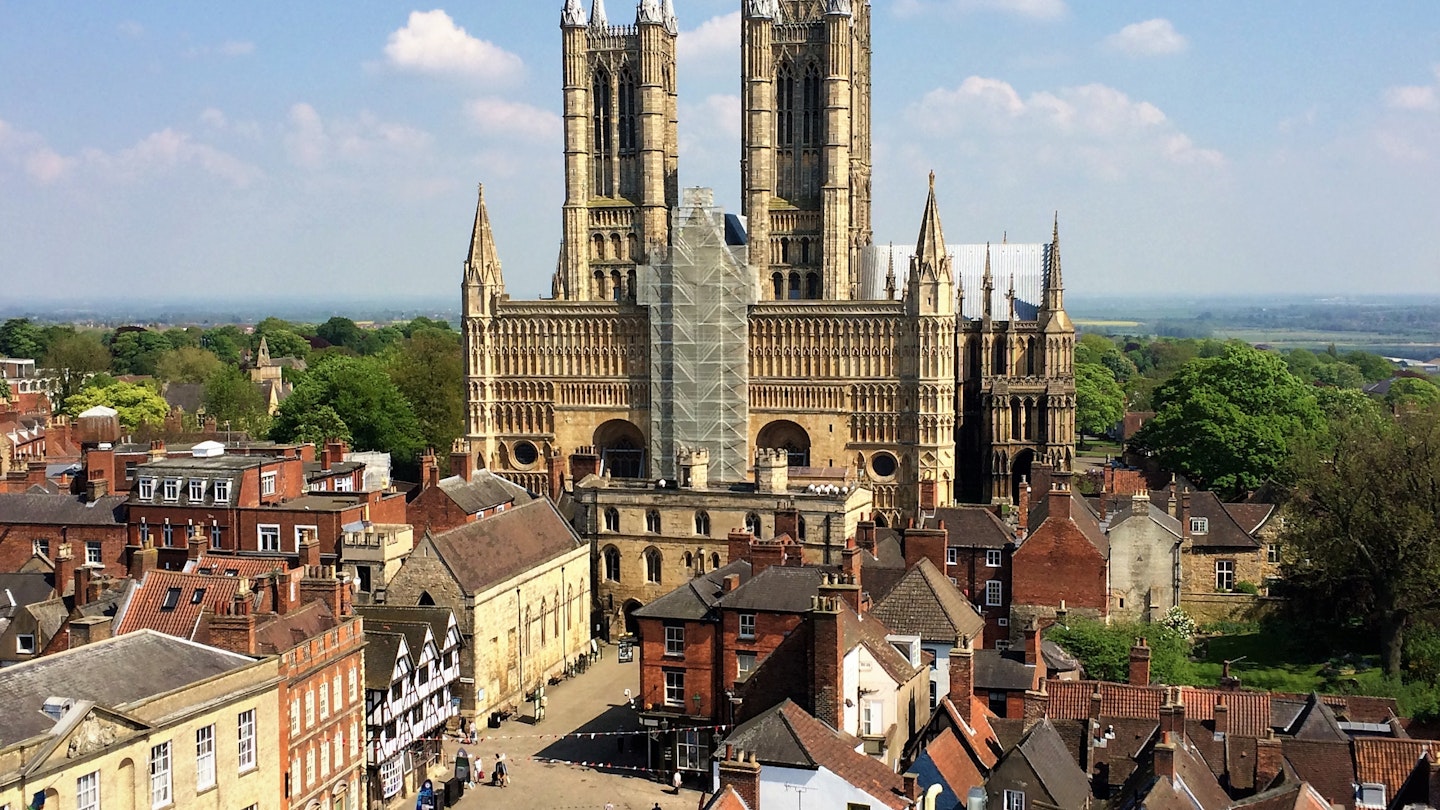Explore the Hidden Gems of Lincoln and Surrounding Areas
Castles, cathedrals, grand stately homes, and quiet country lanes are what many visitors look forward to seeing on any trip to England. One hidden corner of the country, centered on the beautiful cathedral city of Lincoln, offers all these quintessentially English trademarks but with fewer visitors than you’ll get at more famous locations.
For some of the best of Britain without the worst of the crowds, head for the following highlights.
Lincoln – Medieval Record Holder
It might surprise you to learn that Lincoln once literally looked down on the rest of the world thanks to its cathedral being the tallest building on earth. In 1311, with the completion of its 160m-high spire, it surpassed Egypt’s Great Pyramid and held that title undisputed for 238 years until a storm blew the spire down. Even without the spire, this magnificent structure showcases the wealth and significance of this now sleepy city in the Middle Ages.
However, Lincoln’s charms don’t stop with its ecclesiastical claim to fame. Imposing Lincoln Castle houses one of four surviving copies of the 1215 Magna Carta. Furthermore, the city’s steep streets making up the medieval center are lined with centuries-old buildings hosting restaurants, like The Bronze Pig, pubs, and independent shops. For a glimpse into a more recent yet equally fascinating history, visit the International Bomber Command Centre on the outskirts of town, which takes a balanced view of one of World War II’s most significant campaigns.
Use Lincoln as a base for exploring this corner of the country. For accommodation, choose from the historic 600-year-old White Hart, modern conveniences at the Doubletree, or the genteel country manor atmosphere of Washingborough Hall, just a short drive from the city.

Stamford – Star of the Silver Screen
Strolling through the quaint streets of stately Stamford, you might expect to bump into Mr. Darcy. The elegant buildings in this beautiful small town have not escaped the attention of film and television producers, who have featured it in historic dramas, including the 2005 adaptation of Pride & Prejudice. The town center is a joy to explore, with new architectural delights around every corner. If the buildings remind you of the more famous Cotswolds region of southwest England, that’s because there’s a geological link between the two areas – the limestone used here is the same as in the Cotswolds.
Visit St Mary’s Church (noting its leaning tower), enjoy a drink in the atmospheric 13th-century Tobie Norris pub, and spend the night (or at least enjoy afternoon tea) at the relatively modern (a mere 400 years old) George Hotel.
As far as local achievements go, it doesn’t get more impressive than William Cecil, chief adviser to Elizabeth I and a pivotal figure in England during the late 16th century. His rise to power is matched only by the grand estate he constructed, Burghley House. A 30-minute walk from Stamford through wooded parkland, it is the country’s most spectacular example of Elizabethan architecture, showcasing an elaborate exterior, luxurious internal decorations, and grounds designed by the renowned 18th-century gardener, Capability Brown.

Easton Walled Gardens – A Green-Fingered Dedication
The English love their gardens, and the restoration of Easton Walled Gardens has certainly been a labor of love for the Cholmeley family. Landowners in this region for centuries, they have spent the last 20 years (and counting) returning the lawns, flower beds, and trees of Easton to their former glory. A grand house once stood at the center of the gardens but had to be demolished in the 1950s after damage incurred during the war, not from the enemy but from the British forces occupying the property.
Today, guests can wander the beautiful avenue of yews, play on swings, or sit quietly by the river while watching for kingfishers and otters.
Grimsthorpe Castle – If It’s Good Enough for Henry VIII…
Despite his misfortunes in love, Henry VIII enjoyed great prosperity regarding grand homes. Grimsthorpe Castle is no exception; constructed by Henry’s friend, Charles Brandon, in 1541, the deer roaming the grounds today are descendants of those hunted by Henry himself. The site features a Tudor building with a long gallery adorned with family portraits and a grander 18th-century addition created by John Vanbrugh. Surrounding this architectural marvel, the gardens are particularly enchanting in spring when floral scents fill the air.

Peterborough – Beyond the Station
Numerous travelers pass through busy Peterborough station, often missing the beauty that this city has to offer. The first stop should be the cathedral, a Norman masterpiece celebrating 900 years since construction began in 1118. It is also the temporary resting place of two queens: Catherine of Aragon, Henry VIII’s first wife, and Mary Queen of Scots, who was buried here after her execution until 1612.
Close by are several other architectural gems, both within the cathedral’s precincts and in the city center. Take a moment to admire the 17th-century Guildhall before exploring the collection at the Peterborough Museum, located inside a two-hundred-year-old former infirmary.

Getting There & Around
As of May 2019, direct trains run to Lincoln from London. Until then, a quick change at Newark North Gate is required. Stamford is connected by rail to Lincoln and Peterborough. However, to explore the other destinations mentioned, a car is necessary to maximize your experience.
More for Less
A money-saving way to visit several of the sights is to buy a Hidden England pass, which allows access to 4, 6, or 8 sites.
Explore Lincoln and its surroundings to discover hidden gems that capture the essence of England’s rich history and beautiful landscapes.




